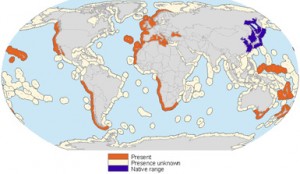Component 2: Natural History of Oysters
This component of the Case Study assignment asks each group to create written explorations of the following disciplinary perspectives as they relate to the natural history of oysters. Your text should be at least 1000 words and include a minimum of two images that illustrates your text. Maps, graphs, and charts are encouraged. Include a caption with image attribution for each visual resource. Include at least four references, fully cited, one of which can be a program text.
You may enjoy a broad historical understanding of what natural history studies are: https://en.wikipedia.org/wiki/Natural_history
For our case study of oysters, at a minimum your group should focus on the oyster species known as the Pacific oyster, Crassostrea gigas . Your discussion should address at least the following topics: life cycle and reproduction, native and cultivated geographic ranges, suitable habitat(s) for entire life cycle (include water quality parameters such as temperature, salinity, turbidity, nutrients, and toxins or pollutants), major predators, parasites or diseases, nursery propagation methods, and typical aquaculture and harvest practices, and productivity of the industry (eg. yield of oysters in specific areas or under specific conditions). In the context of aquaculture, please include a comparison of Crassostrea gigas with the Kumamoto oyster (Crassostrea sikamea) and the native Olympia oyster (Ostrea lurida).
*Note: References should be peer-reviewed journal articles when available and appropriate, then books, then websites. Link all references to your oysters Zotero bibliography.
The Pacific Oyster (Crassostrea gigas), native to Japan, was first introduced to Washington State in 1902. When it proved it was successful, regular shipments of Pacifics began in the 1920s. Hood Canal and Willapa Bay produced the first successful brood stock in 1937. However, it has been introduced to 73 countries with successful cultivation in 17 countries.
Due to over harvesting and pollution in the Pacific Northwest, the indigenous Olympia oyster (Ostrea lurida) fell into decline at the turn of the century. To save the industry, the American oyster (Crassostrea virginica) was introduced to the area but did not survive well under the natural conditions. It was then that the Pacific oyster was introduced and ultimately became the staple for cultivation in the region.
Different varieties have also been cultivated in the region as well. There have been attempts to cross virginicas with c. gigs, but have shown little success. However, Kumamoto (Crassostrea sikamea)varieties are quite successful because of the desire for their deep cup shells.

The Pacific oyster (Crassostrea gigas) has been introduced in coastal waters around the world. The map shows the Pacific oyster’s non-native range in red and native range in blue, by marine ecoregion (Molnar et al. 2008, Frontiers in Ecology and the Environment).

